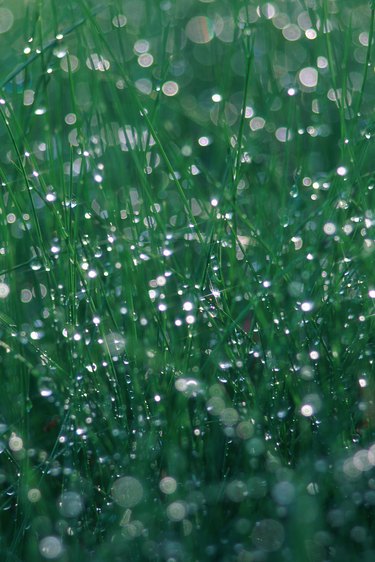 Water in your fertilizer after you apply it.
Water in your fertilizer after you apply it.
Fertilizing your lawn regularly helps your grass to recover quickly after drought, insect damage or heavy wear. According to the University of California College of Agriculture and Natural Resources, you should water deeply a few days before application and water immediately after application to remove any fertilizer granules from the leaf blades and get them to the soil. Choosing when, how much and what type of fertilizer to use will help you achieve a dark-green, lush lawn.
Video of the Day
When to Fertilize
There are two ways to determine when your lawn needs fertilizer, a soil test and a visual assessment. Visually assessing your lawn\’s health is the quickest and cheapest way. A lawn deficient in nitrogen will appear light green, or yellow, and stunted. A lawn deficient in iron will appear yellow, but have no effect on growth at first. Phosphorus is the third most common deficient nutrient, and can be recognized by a dull blue-green color with purple margins and a reddish tint. Bringing a representative sample of your soil to a soil testing lab will give you an accurate account of the amount of fertilizer you need.
How Much Fertilizer
The amount of fertilizer you need will depend upon several factors: what type of fertilizer, the square footage of the lawn and what you use the space for (high-traffic or low-traffic lawn). According to the University of California, an average lawn should receive 4 lbs. of nitrogen per 1,000 square feet per year. Some warm-season grasses, such as zoysiagrass and buffalograss, perform well with only 2 lbs. of nitrogen per 1,000 square feet per year. Do not apply more than 1 lb. of nitrogen at one time, meaning that four applications throughout the year will be necessary.
What Kind of Fertilizer?
Fertilizers come in a variety of applications methods and release types. First, choose whether you prefer to apply liquid or granular. Liquid fertilizers act quickly, and should only be applied on windless, cool days. Many granular fertilizers can be spread by hand, drop or broadcast spreader. Granular fertilizers are further broken down into quick-release and slow-release. Quick release, or soluble fertilizers, give fast results, but the chance of burning the lawn increases. Watering immediately after applying a quick-release fertilizer is especially important. Slow-release, or coated, fertilizers give long-lasting results and are less likely to burn your lawn.
Proper Watering Techniques
Watering immediately after a fertilizer application will move the particles off the leaf blades and down to the soil where they belong. Watering after fertilizing also activates the fertilizer and releases the nutrients into the soil for uptake by the plant. According to the University of Missouri Extension, perennial ryegrass should receive 1.5 inches of water per week, bluegrass 1.2 inches, tall fescue 0.8 inches, zoysia and bermudagrass 0.5 inches and buffalo grass 0.3 inches of water per week throughout the growing season.

